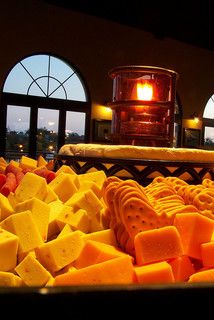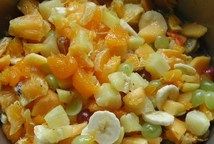A packet of \(\text{6}\) handmade chocolates costs \(\text{R}\,\text{15,95}\). How much does each chocolate cost?

\(\text{R}\,\text{15,95} \div \text{6} = \text{R}\,\text{2,668} \ldots\) rounded off to \(\text{R}\,\text{2,67}\) per chocolate.
|
Previous
1.5 Rounding
|
Next
1.7 Percentages
|
A ratio is a comparison of two or more numbers that are usually of the same type or measurement. If the numbers have different units, it is important to convert the units to be the same before doing any calculations.
We write the numbers in a ratio with a colon (:) between them.
For example, if there are \(\text{8}\) learners who travel by bus and \(\text{12}\) learners who travel by taxi, then we say we have a ratio of \(\text{8}\) learners travelling by bus to \(\text{12}\) learners travelling by taxi.
We can write this as \(\text{8}\) : \(\text{12}\). We can also simplify this ratio to \(\text{2}\) : \(\text{3}\), by dividing both parts by \(\text{4}\).
It is important in which order you state the ratio. A ratio of \(\text{1}\) : \(\text{7}\) is not the same as a ratio of \(\text{7}\) : \(\text{1}\).
A rate, like a ratio, is also a comparison between two numbers or measurements, but the two numbers in a rate have different units.
Some examples of rate include cost rates, (for example potatoes cost \(\text{R}\,\text{16,95}\) per kg or 16,95 R/kg) and speed (for example, a car travels at \(\text{60}\) \(\text{km/h}\)).

When we calculate rate, we divide by the second value, so we are finding the amount per one unit.
For example, if we want a rate for \(\text{R}\,\text{20}\) for \(\text{2}\) \(\text{kg}\) of flour, we write:
\(\text{R}\,\text{20}\) : \(\text{2}\) \(\text{kg}\) = \(\text{R}\,\text{10}\) : \(\text{1}\) \(\text{kg}\)
= \(\text{R}\,\text{10}\)/kg.
This rate is a unit rate.
Elias, a star athlete, runs \(\text{100}\) \(\text{m}\) in \(\text{15}\) seconds.
If he was able to keep running at this speed, how long would he take to cover \(\text{1}\) \(\text{km}\)?
Cheese costs \(\text{R}\,\text{56}\) per kg. Thandi buys \(\text{200}\) \(\text{g}\) of cheese. How much does she pay?

A packet of \(\text{6}\) handmade chocolates costs \(\text{R}\,\text{15,95}\). How much does each chocolate cost?

\(\text{R}\,\text{15,95} \div \text{6} = \text{R}\,\text{2,668} \ldots\) rounded off to \(\text{R}\,\text{2,67}\) per chocolate.
\(\text{1 500}\text{ km} \div\) \(\text{18}\) \(\text{h}\) = \(\text{83,33}\)\(\ldots\) km/h. Round off to \(\text{83,33}\) \(\text{km/h}\).
Nicola types \(\text{96}\) words \(\div\) \(\text{2}\) min = \(\text{48}\) words/min. Karen types \(\text{314}\) words \(\div\) \(\text{7}\) min = \(\text{44,857}\)\(\ldots\) words/min. Round off to a whole word: \(\text{45}\) words/min. Nicola is faster.
Solving problems often involves using ratios and rates to find unknown values. We use a similar process to find missing numbers in ratios and rates.
Thenji makes a fruit salad for breakfast at a restaurant. She uses pieces of fruit in the following ratio:
banana : apple : paw-paw
\(\text{1}\) : \(\text{2}\) : \(\text{3}\)

Equal ratios have a directly proportional relationship. There is another kind of proportion that we need to investigate.
The learners at a school want to hire a hall to hold a party. They can hire the use of a hall for one evening for \(\text{R}\,\text{3 000}\). The learners who are going to the party need to split the cost between them.
The learners decide that they can't hold the party if they need to pay more than \(\text{R}\,\text{25}\) each. What number of learners must go to the party for it to be affordable?

Number of learners | Cost per learner going to the party |
\(\text{30}\) | \(\text{100}\) |
\(\text{50}\) | \(\text{60}\) |
\(\text{100}\) | \(\text{30}\) |
\(\text{200}\) | \(\text{15}\) |
\(\text{300}\) | \(\text{10}\) |
For the following problems, calculate the unknown values. The letter \(x\) indicates an unknown value.
\(x=\text{30}\)
\(x = \text{3}\)
\(x=\text{35}\)
\(x =\text{30}\)
\(x = \text{40}\)
Indicate whether the following proportions are true or false:
True
True
False
False
True
False
True
\(\frac{\text{8} \text{ sentences}}{ \text{1} \text{ paragraph}}\)
A rectangle has a fixed area of \(\text{81}\) square units.
length (cm) | \(\text{1}\) | \(\text{3}\) | \(\text{9}\) | \(\text{27}\) | \(\text{81}\) |
breadth (cm) | \(\text{3}\) |
length (cm) | \(\text{1}\) | \(\text{3}\) | \(\text{9}\) | \(\text{27}\) | \(\text{81}\) |
breadth (cm) | \(\text{81}\) | \(\text{27}\) | \(\text{9}\) | \(\text{3}\) | \(\text{1}\) |
|
Previous
1.5 Rounding
|
Table of Contents |
Next
1.7 Percentages
|